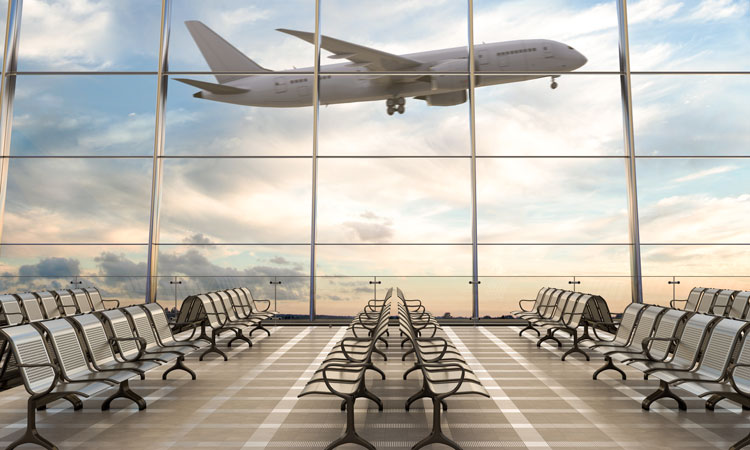Airport technology priorities in the face of a pandemic
- Like
- Digg
- Del
- Tumblr
- VKontakte
- Buffer
- Love This
- Odnoklassniki
- Meneame
- Blogger
- Amazon
- Yahoo Mail
- Gmail
- AOL
- Newsvine
- HackerNews
- Evernote
- MySpace
- Mail.ru
- Viadeo
- Line
- Comments
- Yummly
- SMS
- Viber
- Telegram
- Subscribe
- Skype
- Facebook Messenger
- Kakao
- LiveJournal
- Yammer
- Edgar
- Fintel
- Mix
- Instapaper
- Copy Link
Posted: 22 June 2021 | Billy Shallow | 1 comment
Billy Shallow, Director for Innovation and Technology at Airports Council International (ACI) World, outlines the top 10 priorities that airports should be considering, to meet the challenges of today’s evolving aviation industry.


Although the airport industry has already made significant progress in its recovery from the COVID-19 pandemic, the next few months will be crucial in the ongoing battle against this unprecedented crisis.
Continued travel restrictions, partial lockdowns and ongoing quarantine measures across the world continue to hinder international travel, but vaccine roll outs are picking up pace and allowing for a more promising outlook for recovery and a wider operational restart. Airports continue to focus on the health and welfare of their passengers and staff, cost reductions in line with decreased traffic levels, and planning. These strategies are designed to make airports as safe as possible in order to regain passenger confidence, as well as to remain agile in uncertain times.
ACI has developed material to support the industry with its recovery efforts, including the Airport Health Accreditation (AHA), as well as the Check & Fly public facing portals, which are available online or through the app and enables a passenger to check their destination requirements for COVID-19 measures. In addition, ACI has produced a number of guidance documents for recovery. The latest publication focuses on technology priorities during pandemic times.
Although the airport industry has already made significant progress in its recovery from the COVID-19 pandemic, the next few months will be crucial in the ongoing battle against this unprecedented crisis.
Continued travel restrictions, partial lockdowns and ongoing quarantine measures across the world continue to hinder international travel, but vaccine roll outs are picking up pace and allowing for a more promising outlook for recovery and a wider operational restart. Airports continue to focus on the health and welfare of their passengers and staff, cost reductions in line with decreased traffic levels, and planning. These strategies are designed to make airports as safe as possible in order to regain passenger confidence, as well as to remain agile in uncertain times.
ACI has developed material to support the industry with its recovery efforts, including the Airport Health Accreditation (AHA), as well as the Check & Fly public facing portals, which are available online or through the app and enables a passenger to check their destination requirements for COVID-19 measures. In addition, ACI has produced a number of guidance documents for recovery. The latest publication focuses on technology priorities during pandemic times.
The evolving use of technology
Airports have grasped the opportunity to reconsider their normal business and operational processes and are looking at different solutions – including the deployment of innovative technologies and adjustments to space and infrastructure – in order to support the global effort in overcoming COVID-19.
At the same time, airports need to look for solutions that enable them to become more efficient, reduce costs, deal with an evolving workforce – including the loss of experienced staff – and find new revenues, all while ensuring cyber-security, safety and aviation security levels are sustained.
As a part of the recovery efforts, airports are examining how information technology, automation and digital transformation can play an important role in ensuring that efficiency, safety and customer experience are all addressed. Results from the 2020 Airport IT Trends Survey confirmed a commitment to investments in these areas, as well as new technologies to enhance operations and business results.
The paper has been devised by a number of ACI member airports’ Chief Information Officers (CIOs), who have outlined their top priorities and strategies to meet the challenges of today’s evolving aviation industry. The paper collates information on the background of each topic, puts an action plan together for airports and contains case examples from implementations across the globe.
Airports’ top 10 technology priorities
The top 10 priorities that airports should consider include:
1. Connecting passengers everywhere with accurate and timely travel health information
This is critical to keep passengers up-to-date with the latest restrictions at destinations and the requirements to enter, such as negative tests or proof of vaccination. These requirements are ever changing, and this information needs to be easily identifiable to passengers in order to provide reassurance to passengers that travel is safe and as seamless as possible.
2. Cyber-security
Cyber-attacks are on the rise in 2020, despite being in a pandemic with significantly reduced traffic levels. Cyber continues to be a threat to airport disruption, and airports will need to consider that adequate protection and resources are in place to combat evolving cyber-threats.
3. Business performance optimisation by developing data hubs as a vital airport asset
Airport operational processes are often interconnected and very complex with limited integration. The need to create an airport ecosystem-wide data strategy is paramount to break down silos and increase collaboration across multiple stakeholders. Using artificial intelligence (AI), digital twins and predictive analytics allows for holistic views of airport operations.
4. Accelerate investment in seamless and touchless travel
COVID-19 has sped up the vision of seamless passenger flows for airports across the world. Biometric technology, crowd monitoring, AI for bag tracking and voice control, as well as other innovations, are all being rolled out globally to ensure a contactless journey.
5. Increase intelligent automation to optimise productivity, cost and efficiency
Implementing automation within business processes can reduce cost and personnel deployment savings by reducing expensive manual processing times. Innovative solutions to use automation within terminal operations can include UV-C solutions and tray return systems within security.
6. Develop and implement digital strategies to increase non-aeronautical revenue
Airports should evaluate a digital business plan reminiscent of the new era, focusing on the digital transformation of touchless payment, virtual shopping/ordering services to increase revenue and ensure contactless travel.
7. Upgrade enabling technology and capabilities to service the growing needs of the business
Airports need to revisit, plan and upgrade their enabling technology outlook. This should start by first building a strong data foundation, implementing common use solutions and having the mindset of a technology company.
8. Consolidate technology to improve the cost and agility of transformation
Airports should undertake a work programme that evaluates potential solutions for consolidation. This should include a business case development, a cost-benefit analysis that evaluates capital expenditure versus any short-, medium- or long‑term operational expenditure savings (OPEX).
9. Leverage agile methods to deliver quick win solutions
Airports should consider a move towards an agile way of development and get involved with industry level initiatives to address the crisis.
10. Leverage data analytics to gain a more comprehensive understanding of airport operations
Airports should develop work programmes that will increase the knowledge, skills and resources available to support robust integrated data programmes and overall operational management.
Continued industry transformation
Technology will remain critical to the recovery and future development of the aviation industry, and the industry is going through a complete transformation as it emerges from the pandemic.
Part of this transformation is the rapid move to digitalisation through the implementation and growth of technologies that will help to provide a more efficient, cost-effective and resilient aviation system.
The technologies and solutions discussed have been, in part, accelerated by the pandemic, but are also part of the long-term transformation underway within the industry.


Issue
Related topics
Biometrics, Contactless / Touchless technology, COVID-19, Cyber-security, New technologies, Safety, Security



















Thanks for sharing the blog. Nowdays aviation industry is one of the economically growing sector in the transportation system in USA. That’s why technology is needed for any kind of airport.